Discover the benefits of Siberian ginseng—long known for enhancing health, athletic performance, and the body’s ability to deal with stress.
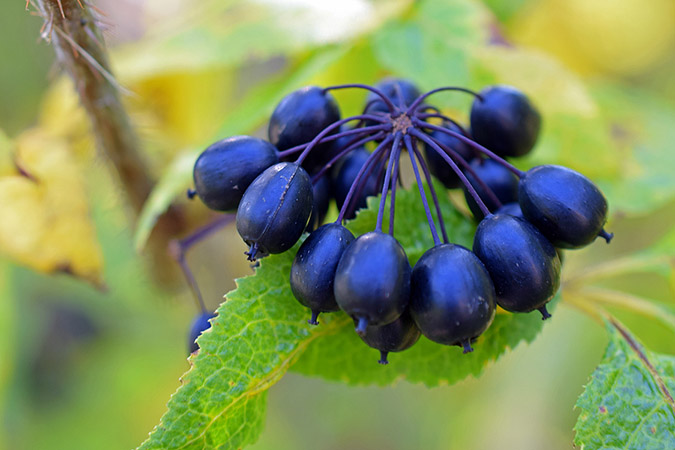
Benefits of Siberian Ginseng: The Adaptogen for Astronauts, Athletes, and Anyone Under Stress
Botanical Name: Eleutherococcus senticosus
Family: Araliaceae
Other Common Names: Devil’s bush, devil’s shrub, touch-me-not, wild pepper, kan jang, Acanthopanax senticosus, ciwujia, eleuthero, shigoka, or Ussurian thorny pepperbush1)https://en.wikipedia.org/wiki/Eleutherococcus_senticosus 2)http://www.altmedrev.com/archive/publications/11/2/151.pdf 3)https://www.mountainroseherbs.com/products/eleuthero-root/profile
Parts Used: Rhizome or root, leaves may also have medical benefit but are not regularly used4)Pedersen, Mark. Nutritional Herbology: A Reference Guide to Herbs. Whitman Publications, 2010.
Actions: Adaptogen, tonic, chemoprotective, cardiac tonic, bitter5)https://thenaturopathicherbalist.com/2015/09/20/eleutherococcus-senticosus/
Taste: Pungent, slightly bitter
Plant Uses: Adaptogen, anti-fatigue, increased mental alertness, anti-inflammatory, enhanced athletic performance
Plant Preparations: Powdered, tincture, tea
Toxicities/Warnings: Not for use in children, pregnant women, or in high doses. Caution is advised for use if you have bleeding disorders, excessive nervousness, diabetes, hypoglycemia, or blood pressure disorders. May increase light reactivity and alter the impacts of alcohol, ACE inhibitors, anti-depressants, sedatives, anti-allergy agents, stimulants, and sleep aids.6)https://www.naturalmedicinejournal.com/journal/2012-03/siberian-ginseng-review-literature For extended use, cycling may be needed, such as using for 6 weeks and then taking 2 weeks off.7)https://thenaturopathicherbalist.com/2015/09/20/eleutherococcus-senticosus/
Introduction to Siberian Ginseng
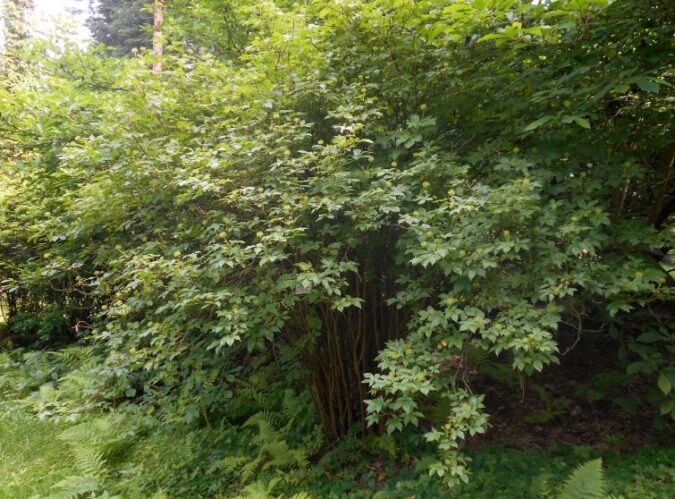
Image from Wiki Commons
Eleutherococcus senticosus, commonly called Siberian ginseng, is not a true relative of American or Panax ginseng. They do belong to the same plant family, Araliaceae. However, they evolved separately and are generally not considered to be related in any meaningful way. In fact, to avoid confusion between the overharvested true ginseng, many herbalists use the term “eleuthero” instead of “Siberian ginseng.”
This plant’s scientific name, Eleutherococcus senticosus, comes from a Greek word meaning “free-berried” and from a Latin word meaning “thorny.”8)https://en.wikipedia.org/wiki/Eleutherococcus_senticosus The facts that it often grows in dense thickets in areas where other plants struggle and that it has bristles on the stems and branches have also earned it nicknames like the devil’s shrub, devil’s bush, and touch-me-not.
You May Also Like:
Although Siberian ginseng is not related to true ginseng, it owes its rise in popularity to the more popular plant. When researchers began looking for an alternative to the increasingly hard-to-find true ginseng, they discovered that eleuthero had similar properties and was more abundantly available. Also, this ginseng alternative had already been in use in Chinese medicine and in Russia for as many as 2,000 years.9)https://draxe.com/eleuthero-siberian-ginseng/ It, too, had a long folk history of being used as a general health tonic and immune booster.
According to some documented studies and a long history of anecdotal experience, Siberian ginseng may be even more powerful for use as an adaptogen and physical and mental performance-enhancer than true ginseng. In fact, the term “adaptogen” was actually coined by pharmacologist Dr. Nikolai Lazarev in 1947 specifically for the purpose of describing eleuthero’s particular usefulness as a protectant against environmental stresses.10)https://www.integrativepro.com/Resources/Integrative-Blog/2017/History-Benefits-Eleuthero
5+ Benefits of Siberian Ginseng
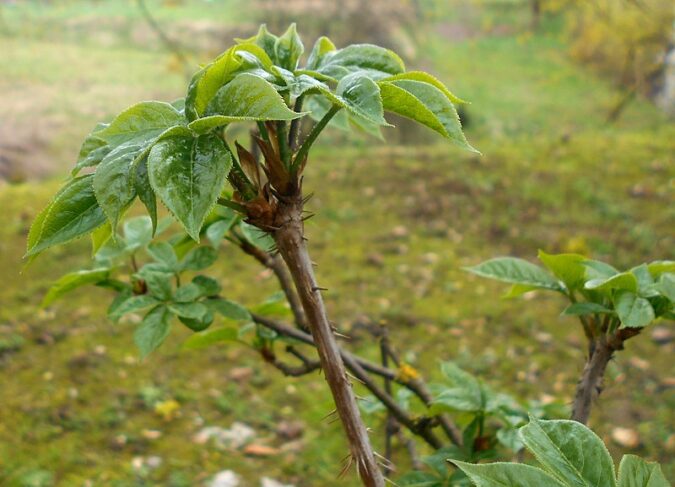
Image from Wiki Commons
- Adaptogen: One of the benefits of Siberian ginseng for which it is most famous is its general effectiveness at helping users manage their response to periods of environmental stress.11)https://draxe.com/eleuthero-siberian-ginseng/ It is believed to be beneficial for mental, physical, and biological forms of stress. Big transitions at work, a family crisis, athletic challenges, rampant flu and cold protection, and more stressors may all be weathered better with eleuthero.
- Expediting Cold and Flu Recovery: Some studies have shown that the duration and intensity of common illnesses like cold and flu may be mitigated through the timely use of Siberian ginseng.12)http://pennstatehershey.adam.com/content.aspx?productId=107&pid=33&gid=000250
- Immune-Boosting: Siberian ginseng has been shown to have immune-boosting benefits that can benefit healthy individuals as well as those undergoing treatment for cancer or those with HIV/AIDS.13)https://articles.mercola.com/sites/articles/archive/2018/03/19/siberian-ginseng-benefits.aspx It may increase T-cell counts and provide protection during radiation.
- Treating Herpes Simplex Type 2: According to WebMD, taking a specific Siberian ginseng extract that contains eleutheroside 0.3% (Elagen) seems to reduce the number, severity, and duration of herpes simplex type 2 infections.14)https://www.webmd.com/vitamins/ai/ingredientmono-985/ginseng-siberian
- Enhanced Physical Performance: Eleuthero may increase energy and reduce fatigue by various methods such as better utilization of fat, reduction of lactic acid, increased oxygenation in the blood, and increased heart-rate capacity.15)https://www.medicalnewstoday.com/articles/319084.php
- Other Potential Benefits: Although more research is necessary to confirm the effectiveness of Siberian ginsing for other applications, anecdotal evidence and preliminary research suggest that it may be beneficial for cognitive improvement, bipolar treatment, mitigation of Parkinson’s effects, conditions of the heart and blood vessels, kidney disease, Alzheimer’s disease, attention deficit hyperactivity disorder (ADHD), chronic fatigue syndrome, diabetes, fibromyalgia, rheumatoid arthritis, chronic bronchitis, tuberculosis, and treating the side effects of cancer chemotherapy.16)https://www.webmd.com/vitamins/ai/ingredientmono-985/ginseng-siberian 17)https://www.herbwisdom.com/herb-ginseng-russian.html
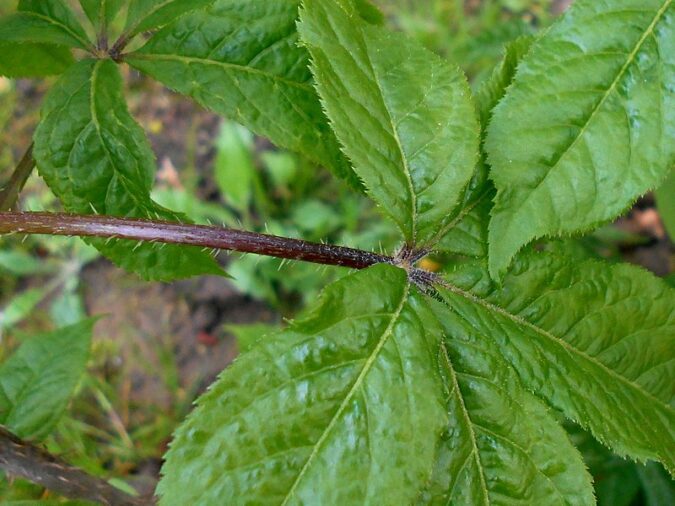
Image from Wiki Commons
Medicinal Properties of Eleutherococcus Senticosus
The benefits of Siberian ginseng as a general adaptogen to help manage various stresses to our bodies is well-established. It has a long history of use as an athletic performance enhancer in its countries of origin, including Russia and China. Additionally, its folk renown as a health or immune tonic is well-documented.
According to some accounts, there may be over 3,000 published studies on eleuthero.18)http://adaptogensbook.com/the-monographs-eleuthero/ However, among most natural health websites, the general consensus is that many of the studies are not sufficient to establish the exact benefits, risks, and utility of this herb. Some proponents of Siberian ginseng believe this extremely beneficial medicine may be largely ignored in peer-reviewed research because it doesn’t offer the profitability of the more rare and costly true ginseng.19)https://www.naturalnews.com/024235_ginseng_energy_herb.html
You May Also Like:
“19 Remarkable Benefits of Stinging Nettle”
“Overhaul Your Medicine Cabinet With Herbal Remedies”
“Oatstraw: Stress Reliever, Love Potion, Brain Booster, and More”
Still, even with disagreement over the amount and quality of research available, much of the data and practical experience suggest the potential health benefits of Siberian ginseng may be extensive, particularly when used to enhance the effectiveness of other medications and treatments. According to proponents of its use, benefits range from very specific—such as protecting cells against radiation or treating bipolar disorder—to broad-reaching, such as increasing oxygenation in the blood to enhance many other physical functions.
According to a roundup of the available literature by the American Botanical Council, eleuthero may increase immune system function by enhancement of T-cell activation; intensify regeneration and accelerate recovery during heart attacks due to the transformation of lipids into glycogen; and support and enhance adrenal function resulting in greater energy and better reaction to stress. It maximizes the utilization of oxygen by working muscles, which prolongs the aerobic state. It also increases endurance and reduces activation of the adrenal cortex in response to stress.20)http://cms.herbalgram.org/ABCGuide/Monographs/Eleuthero.html?ts=1556460094&signature=4db7d8133d1ddf29eb7e66612e7c2d94
You May Also Like:
“7 Ways to Use Pine Trees for Food and Medicine, Year-round”
According to experienced herbal medicine practitioners, Siberian ginseng also offers a host of additional benefits.
Siberian ginseng is believed to normalize blood sugar and pressure. It stimulates adrenal and thyroid hormones. When used in conjunction with exercise or under stress, it activates natural killer and other immune cells and continues working for up 24 hours. 21)Pedersen, Mark. Nutritional Herbology: A Reference Guide to Herbs. Warsaw, IN: Whitman Publications, 2010.
In case you have plans to take a space flight soon, this herb has been reported to increase physical strength, sharpen concentration, improve mental power, increase visual acuity, improve color vision, and promote the natural healing power of the body in Russian Cosmonauts. So, don’t leave planet Earth without it!22)https://www.naturalnews.com/024235_ginseng_energy_herb.html
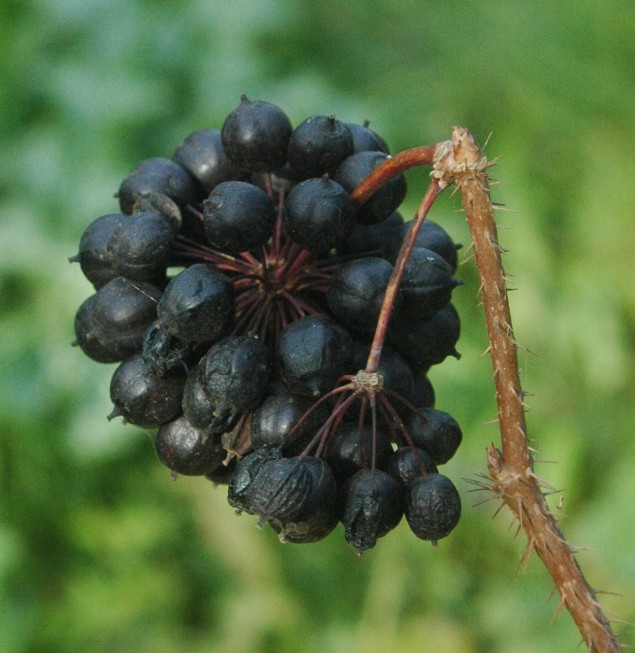
Image from Wiki Commons
Oh, and if you have any exams coming up soon, you may want to try taking a powerful combo of Siberian ginseng and Ping Da Wan (aka Gotu Kola). This dynamic duo is purported to increase concentration, focus, memory, and brain-power endurance. According to Christopher Gussa, founder of Plant Cures Inc., the benefits of Siberian ginseng taken along with Gotu Kola are effectively like “cheating” on your exams!23)https://www.naturalnews.com/024235_ginseng_energy_herb.html
Germany’s Commission E has approved Siberian ginseng “as a tonic for invigoration and fortification in times of fatigue and debility or declining capacity for work and concentration. Ginseng was also approved for use during convalescence.”24)http://cms.herbalgram.org/commissione/Monographs/Monograph0092.html
Benefits of Siberian ginseng may also include antiviral properties. It has demonstrated effectiveness at weakening pathogens as they enter your body. 25)https://blog.bulletproof.com/eleuthero-benefits/
You May Also Enjoy:
“The Grapes of Youth: 11+ Age-Defying Reasons to Love This Plant”
“Making and Using a Poultice … Even on Hard-to-Treat Areas!”
“Elderberry: Natural Remedy for Colds, the Flu, Inflammation … Even Cancer!”
Want the benefits of caffeine without the post-cup crash? Siberian ginseng is often used as a caffeine-free mental energy enhancer. It gives you all the alertness and focus of a cup of Joe without the negative side effects.26)https://blog.bulletproof.com/eleuthero-benefits/
For some herbal medicine practitioners, the real benefit of eleuthero isn’t all the individual benefits detailed above. Instead, it’s the way that it promotes overall health27)https://www.mountainroseherbs.com/products/eleuthero-root/profile by working effectively on a number of fronts, including by mitigating stress, boosting immunity, shortening the duration of illnesses, increasing the benefits of exercise, and much more.
Nutritional Properties of Siberian Ginsent
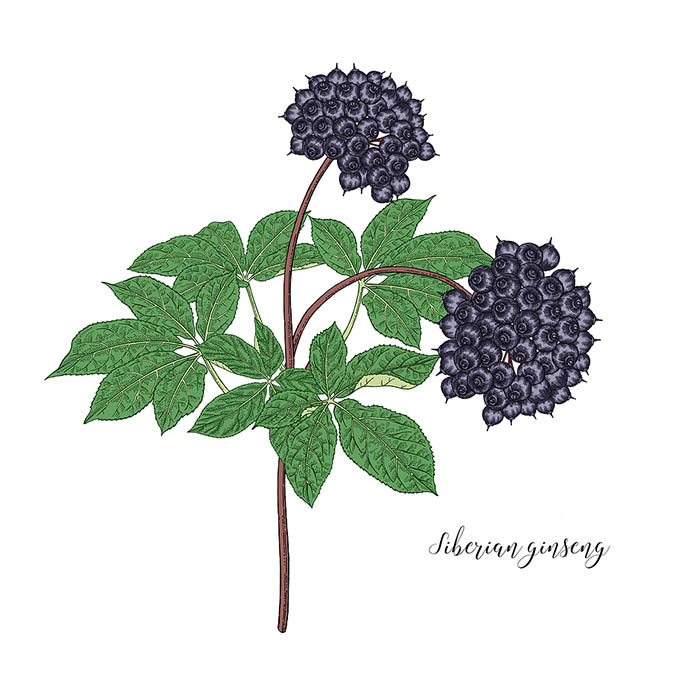
Siberian ginseng contains saponins that may give it a soapy, somewhat bitter flavor. As such, it’s usually taken as a dried powder or tincture rather than taken in large enough doses to be nutritionally significant. However, for specific treatments, larger quantities may be ingested.
Overall, though, even small daily doses of eleuthero may contribute noticeably to your daily dosages of magnesium, phosphorus, zinc, and niacin. When taken in larger doses, it may also contribute a fair amount of iron, potassium, riboflavin, selenium, thiamine, vitamin A, and vitamin C.
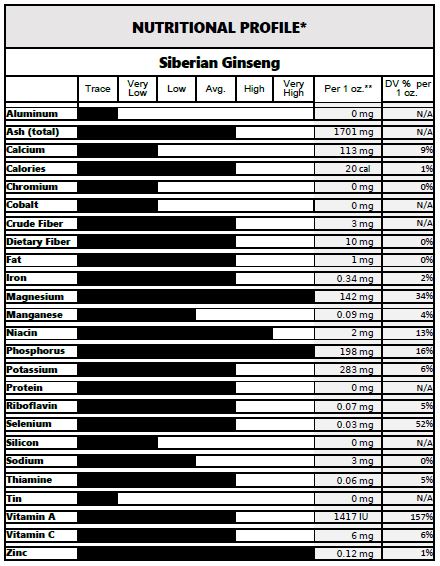
*This table details the nutrient quantities in the dried root of Siberian ginseng using data from Nutritional Herbology: A Reference Guide to Herbs by Mark Pedersen (Whitman Publications, 2010). The DV % per 1 ounce increments are based on the FDA guidelines for adults and children over 4 years of age and are based on a 2,000 calorie diet. For more personalized estimates of your recommended daily values, consider using a calculator such as this one: https://fnic.nal.usda.gov/fnic/dri-calculator/results.php. Note that, for many nutritional supplements, only small quantities are used or only specific nutrients are available in an extract form (e.g., tincture). Therefore, the nutritional quantities represented in this table are for general reference only and should not be used for determining safe dosages or calculating nutritional properties of a specific product. Refer to the manufacturer’s label for actual nutrition information.
Preparations and Typical Dosing
Powdered Dried Root
Siberian ginseng is most commonly available in powdered root format. Using the powder in smoothies to mask the flavor, putting it in capsules for easy swallowing, or drinking it in a tea are typical methods for ingesting the powdered root.
For most applications, dosages of 0.5–1 gram per day are normal.28)Pedersen, Mark. Nutritional Herbology: A Reference Guide to Herbs. Whitman Publications, 2010.
For treatment of specific maladies, the following dosage rates are recommended by WholeHealth Chicago.29)https://wholehealthchicago.com/2009/05/19/siberian-ginseng/
Colds/Flu: 300 mg, twice a day for 7–10 days
Fatigue: 100–200 mg, twice a day
Stress: 100–200 mg, 2 or 3 times a day
Tinctures
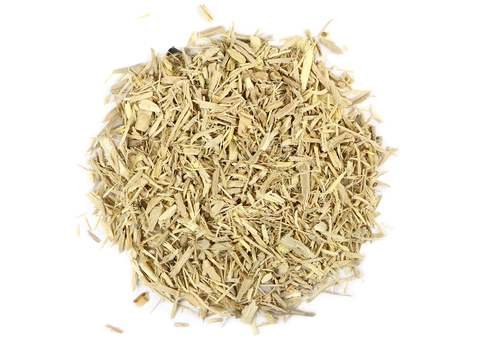
Photo from Mountain Rose Herbs
Tinctures made with dried Siberian ginseng are also common. Use a ratio of 1 part dried root to 5 parts menstruum, made up of 50% alcohol and 50% water.30)Pedersen, Mark. Nutritional Herbology: A Reference Guide to Herbs. Whitman Publications, 2010.
Formulated Extractions
For medical purposes, extractions primarily containing condition-related percentages of eleutherosides from Siberian ginseng may also be used. Talk to your medical health practitioner for details.
Fresh Root
Some people also use the fresh root of Siberian ginseng alone or mixed with other substances, such as yogurt, to improve palatability. For fresh use, 1–2 teaspoons grated or chopped root is a typical daily dose.31)Pedersen, Mark. Nutritional Herbology: A Reference Guide to Herbs. Whitman Publications, 2010.
Uses for Animals
Eleuthero is often used to aid with joint inflammation and care in dogs.32)https://www.dogsnaturallymagazine.com/herbs-for-canine-joint-care/ Some people also use it as a general wellness herb in animals with low immune action due to illness or cancer treatments.
Dosages are designated by animal weight and condition. Consult with a holistic vet for more detailed dosage information.
You May Also Like:
“Planting by the Moon and Stars: Great Idea or Hogwash? Part 1: The Moon”
“Planting by the Moon and Stars: Great Idea or Hogwash? Part 1: The Stars”
Please note that, according to Dr. Doug Knueven, many herbs (such as Siberian ginseng), “interact with the liver’s detoxification system. They should not be used with phenobarbital, glucocorticoids, ketoconazole, midazolam, and calcium channel blockers.”33)https://drdougknueven.com/?p=339
Precaution/Dangers/Contraindications
In general, like other adaptogens, Siberian ginseng is considered safe to use by people in good health. As mentioned earlier, there are only a limited number of controlled studies related to Siberian ginseng. As a result, there is very limited information on potential drug interactions and dangers. However, large doses may increase blood pressure. Additionally, people with severe nervousness and sleep disorders may suffer ill effects from using eleuthero.
Until more research is done, use of Siberian ginseng should be avoided in children; during pregnancy or while breastfeeding; and in patients with bleeding disorders, heart conditions, or high blood pressure. Close monitoring is necessary when Siberian ginseng is used by individuals with diabetes, hormone-sensitive conditions, or mental conditions such as schizophrenia.34)https://www.rxlist.com/ginseng_siberian/supplements.htm
Plant ID
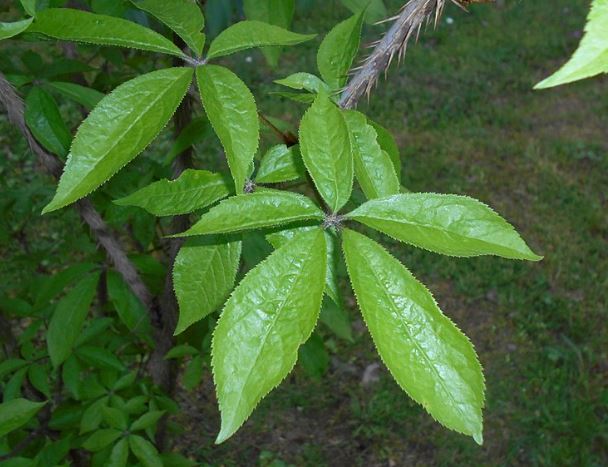
Image from Wiki Commons
Siberian ginseng is a perennial, deciduous shrub that grows slowly to an average height of up to 6–7 feet or 2 meters. In some conditions, it has been reported to grow as tall as 15 feet.
It is hardy in USDA planting zones 3–8. The leaves are palmate and bristled. It flowers in early summer and is self-fertile. It produces small berry clusters, with each berry attached to the cluster by an individual stem. The berries are red when young, turning dark purple with age.
You should always be absolutely sure about the identity of a plant before harvesting and using it. Be sure to verify your identification with multiple, trusted sources.
Where It Grows and Where to Find It
Siberian ginseng’s native habitat is located in Japan, China, Korea, and the Far East of Russia. 35)https://www.mountainroseherbs.com/products/eleuthero-root/profile It is generally found in mixed coniferous forests in dappled shade or along a sunny forest edge.
This shrub can be found in a variety of soil types—including light (sandy), medium (loamy), and heavy (clay) soils. It can grow well in nutritionally poor soil with high organic content such as leaf matter. It can also be found in a variety of soil pH types, including acidic, neutral, and alkaline soils. It prefers moist soil.36)https://pfaf.org/user/Plant.aspx?LatinName=Eleutherococcus+senticosus
You May Also Like:
“Identifying and Using Chickweed”
“Hackberries: Nature’s Grape-Nuts for Winter Survival”
How and When to Harvest
Roots and rhizomes are harvested when plants are at least 3–4 years old. Generally, root cuttings are taken in fall or when the plant is dormant.37)https://pfaf.org/user/Plant.aspx?LatinName=Eleutherococcus+senticosus Similar to harvesting horseradish, leave part of the root in the ground for future growth.[/note]file:///C:/Users/Tasha/Desktop/[19437714%20-%20HortTechnology]%20Siberian%20Ginseng.pdf[/note]
Bonus!
Check out what our famous forager and herbal medicine man Scott Sexton has to say about this incredible herb:
It's day 17 of my 31 day video challenge. Today we'll look at Siberian Ginseng. If you live in Asia, you may have a chance of coming across this in the wild. For the rest of us, we may still have a chance of growing it. Growing is always preferable, when possible. When the zombies come, there will be no ordering herbs off the internet!
Posted by A Forager's Guide to the Zombie Apocalypse on Sunday, March 17, 2019
What Do You Think?
Siberian ginseng is an ancient medicine that may have excellent utility for our modern, hectic, and stressful lives. Have you tried this adaptogen to control stress or boost immunity? What other benefits of Siberian ginseng have you experienced? Let us know what you think!
You May Also Be Interested In:
- Are you at stage 3? Learn the 7 stages of becoming a Medicine Woman or Medicine Man.
- Take a free 4-part training to become a Medicine Woman or Medicine Man.
- Free e-Book: “Garlic: Your First Home Medicine”
- Free e-Book: “Top 10 Immune-Boosting Herbs”
- How to make Fire Cider (a.k.a. Four Thieves Tonic)
- Fight your next infection NATURALLY. Treating Infections Without Antibiotics
- Your teeth can heal themselves! Alternatives to Dentists
- Boost your immune system and fight off colds! Make your own elderberry syrup.
- Free e-Book: “The Ancient Art of Raw Vinegars”
- The #1 way to improve your health is to kick the sugar habit. Our free 7 Day Sugar Challenge can help!
______________________________
This is an updated version of an article that was originally published on August 16, 2019. The author may not currently be available to respond to comments, however we encourage our Community members to chime in to share their experiences and answer questions!
Psst! Our Lawyer Wants You to Read This Big, Bad Medical Disclaimer –> The contents of this article, made available via The Grow Network (TGN), are for informational purposes only and do not constitute medical advice; the content is not intended to be a substitute for professional medical advice, diagnosis, or treatment. Always seek the advice of a qualified health care provider with any questions you may have regarding a medical condition. If you think you may be suffering from any medical condition, you should seek immediate medical attention. You should never delay seeking medical advice, disregard medical advice, or discontinue medical treatment because of information provided by TGN. Reliance on any information provided by this article is solely at your own risk. And, of course, never eat a wild plant without first checking with a local expert.
The Grow Network is a participant in the Amazon Services LLC Associates Program, an affiliate program designed to provide a means for our team to earn fees for recommending our favorite products! We may earn a small commission, at no additional cost to you, should you purchase an item after clicking one of our links. Thanks for supporting TGN!

Tasha Greer is a regular contributor to The Grow Network and has cowritten several e-books with Marjory Wildcraft. The author of “Grow Your Own Spices” (December 2020), she also blogs for MorningChores.com and Mother Earth News. For more tips on homesteading and herb and spice gardening, follow Tasha at Simplestead.com.
References
| ↑1, ↑8 | https://en.wikipedia.org/wiki/Eleutherococcus_senticosus |
|---|---|
| ↑2 | http://www.altmedrev.com/archive/publications/11/2/151.pdf |
| ↑3, ↑27, ↑35 | https://www.mountainroseherbs.com/products/eleuthero-root/profile |
| ↑4, ↑28, ↑30, ↑31 | Pedersen, Mark. Nutritional Herbology: A Reference Guide to Herbs. Whitman Publications, 2010. |
| ↑5, ↑7 | https://thenaturopathicherbalist.com/2015/09/20/eleutherococcus-senticosus/ |
| ↑6 | https://www.naturalmedicinejournal.com/journal/2012-03/siberian-ginseng-review-literature |
| ↑9, ↑11 | https://draxe.com/eleuthero-siberian-ginseng/ |
| ↑10 | https://www.integrativepro.com/Resources/Integrative-Blog/2017/History-Benefits-Eleuthero |
| ↑12 | http://pennstatehershey.adam.com/content.aspx?productId=107&pid=33&gid=000250 |
| ↑13 | https://articles.mercola.com/sites/articles/archive/2018/03/19/siberian-ginseng-benefits.aspx |
| ↑14, ↑16 | https://www.webmd.com/vitamins/ai/ingredientmono-985/ginseng-siberian |
| ↑15 | https://www.medicalnewstoday.com/articles/319084.php |
| ↑17 | https://www.herbwisdom.com/herb-ginseng-russian.html |
| ↑18 | http://adaptogensbook.com/the-monographs-eleuthero/ |
| ↑19, ↑22, ↑23 | https://www.naturalnews.com/024235_ginseng_energy_herb.html |
| ↑20 | http://cms.herbalgram.org/ABCGuide/Monographs/Eleuthero.html?ts=1556460094&signature=4db7d8133d1ddf29eb7e66612e7c2d94 |
| ↑21 | Pedersen, Mark. Nutritional Herbology: A Reference Guide to Herbs. Warsaw, IN: Whitman Publications, 2010. |
| ↑24 | http://cms.herbalgram.org/commissione/Monographs/Monograph0092.html |
| ↑25, ↑26 | https://blog.bulletproof.com/eleuthero-benefits/ |
| ↑29 | https://wholehealthchicago.com/2009/05/19/siberian-ginseng/ |
| ↑32 | https://www.dogsnaturallymagazine.com/herbs-for-canine-joint-care/ |
| ↑33 | https://drdougknueven.com/?p=339 |
| ↑34 | https://www.rxlist.com/ginseng_siberian/supplements.htm |
| ↑36, ↑37 | https://pfaf.org/user/Plant.aspx?LatinName=Eleutherococcus+senticosus |







